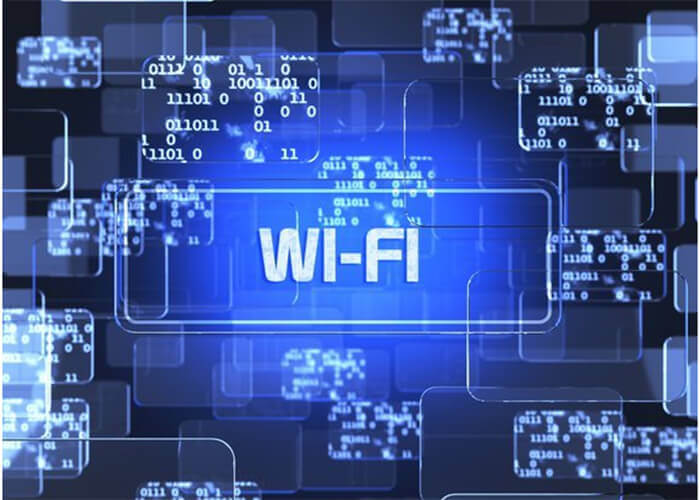
What is Wi-Fi-6?
Wi-Fi is not a convenient network, but a major connection to your device.
There is currently much debate about the new generation of Wi-Fi standard 802.11ax, commonly referred to as Wi-Fi-6.
Many new technologies are usually considered a major event by manufacturers when they first appear, but they fail because they are impractical and do not meet expectations. However, Wi-Fi 6 is the first Wi-Fi standard designed on the premise that Wi-Fi is the main connection of the device, not a convenient network, so people’s enthusiasm is justified.
Wi-Fi-6 is equipped with features such as Orthogonal Frequency Division Multiple Access (OFDMA), 1024-QAM (Quadrature Amplitude Modulation) coding, and Target Wakeup Time (TWT) to speed up Wi-Fi and create congestion.
Many of these extensions come from the LTE(FPC antenna) and 4G arena(FPCB antenna) and have already solved these challenges. These new features improve the mobile experience and extend the battery life of clients, opening the door to a variety of applications previously not possible with Wi-Fi. For example, architects can now view their homes over Wi-Fi using virtual reality (VR).
Wi-Fi-6 was approved in 2019 and many commercial products are already available. All companies will eventually need to deploy Wi-Fi-6, but many do not need to deploy it immediately.
4 companies that should introduce Wi-Fi-6
(1) Customers currently running Wi-Fi 4 (802.11n) or earlier versions
According to statistics, it is estimated that up to 49% of businesses still run Wi-Fi 4 within their organization. This technology has been in use for nearly a decade and can cause major problems with application performance and reliability. These customers should skip Wi-Fi 5 (802.11ac) and deploy Wi-Fi-6. With Wi-Fi 5, you may need to perform another upgrade within a couple of years, but Wi-Fi 6 can be left alone for at least five years.
(2) Pioneering companies leading the adoption of new technologies
Many companies strive to maintain a leading position in technology. Wi-Fi-6 provides the best experience for customers and internal employees. Technology should be the first consideration for this type of business. These companies typically emerge in highly competitive industries such as luxury retailers and entertainment venues, and low-performance wireless networks quickly push customers to another brand.
(3) Companies using high-bandwidth, immersive applications
Many companies are integrating high-bandwidth applications into their business processes. For example, VR is used as a customer service and collaboration tool, as well as high-definition video in corporate workspaces and conference rooms. The increased bandwidth of Wi-Fi 6 improves the user experience.
(4) Organizations building high-density wireless networks
This includes public places, universities, stadiums and theaters. These types of enterprises typically need to log on to Wi-Fi to get usage data about their audience. Older versions of Wi-Fi quickly saturate the network and allow individuals to switch to LTE. It is difficult to implement such use cases in older versions, but it is possible in Wi-Fi-6.
3 steps to get ready to use Wi-Fi 6
(1) Make sure that the wired network is updated
Wi-Fi 6 brings a cascading effect to the campus core. Increasing bandwidth can saturate cable edges, and upgrades can have certain core impacts.
Key features required for wired networks include 30 watts of Power over Ethernet (PoE +), multi-Gigabit interfaces (1 / 2.5 / 5 GigE), and 40 Gigabit core uplinks. In addition, unified management is a prerequisite.
This allows you to manage your security and access policies from a single dashboard and distribute them across your wired and wireless networks at the same time. It’s important to remember that the wireless experience is as good as the wired backbone.
(2) Implement AI-based operation management
Wi-Fi-6 allows businesses to achieve hyper-connectivity, but in reality everything is bundled into a common network. This allows companies to create new processes and take productivity to new heights. The disadvantage of over-connection is the increased complexity.
According to a survey, 61% of companies have little confidence in understanding all the devices on their network. This problem only gets worse as more things connect. People can’t work fast enough to look at everything and find insights into the data, but machines can. Artificial intelligence-based operating tools are an important requirement for a successful Wi-Fi-6 deployment.
(3) Connect the corporate network to the IoT-specific network
Many vertical industries close their networks for specific business functions. For example, the electronic shelf network of retail stores and the radiology network of hospitals. Digital transformation and the Internet of Things (IoT) will eventually integrate these networks. Network experts need to be prepared for this by understanding the size of these networks, the protocols used (such as BLE and Zigbee), and security risks.
Finally, many IT professionals are worried that Wi-Fi-6 may be used too soon, as mobile devices with WiFi-6 chips are still rare. Before Wi-Fi-6 clients become popular, we believe it’s better to establish the right network than to respond after a problem occurs.
At the same time, devices that support the Wi-Fi 5 or earlier WiFi protocol will work well on WiFi-6 networks.
Besides the How To Tell If Wi-Fi-6 Is Right For You article, you may also be interested in the below articles?
What is the difference between WIFI and WLAN?
Summary of 41 Basic Knowledge of LTE
What Is The 5G Network Slicing?
